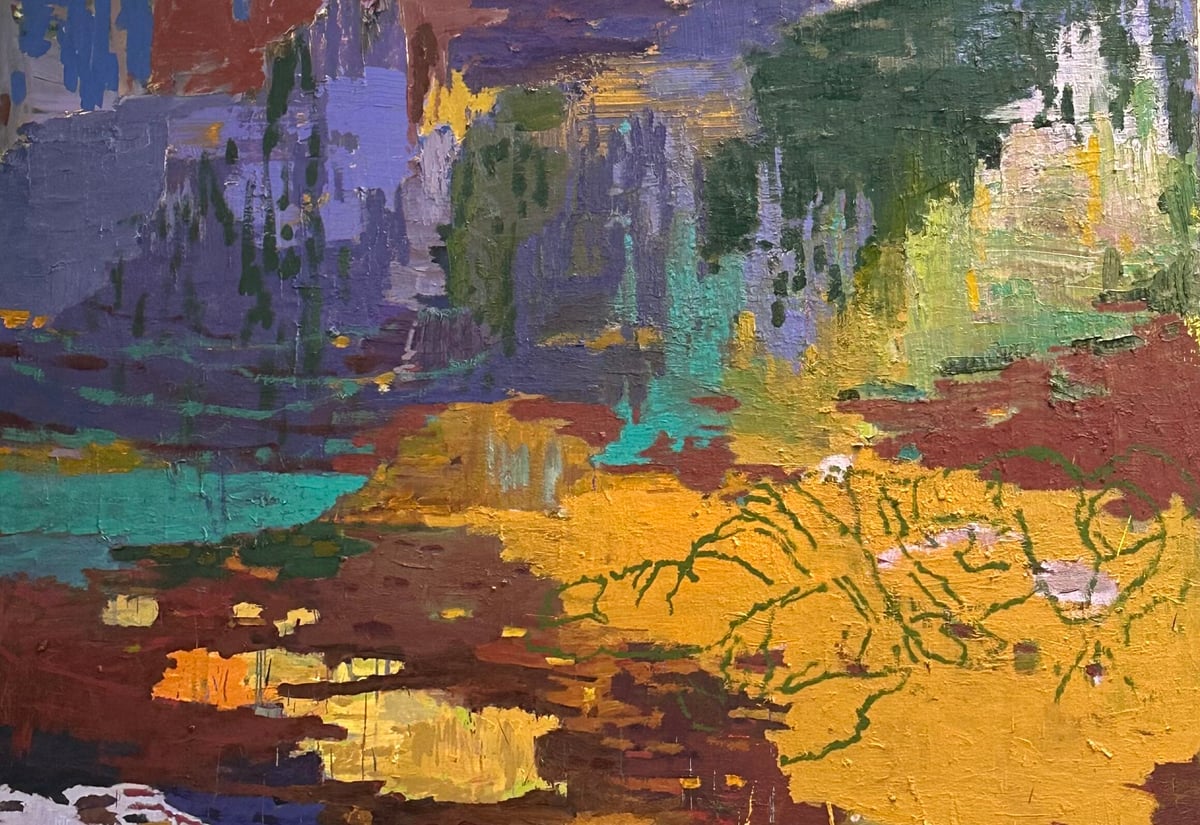Kehnet Nielsen is renowned for his richly layered paintings, blending personal experience with literary and art historical references to create what he describes as "psychological landscapes". This exhibition marks over three decades of collaboration between Nielsen and the gallery, with series of twenty-five new paintings. A self-contained library will invite visitors to experience the works guided by the cast of cultural characters - from Ernest Hemmingway to Albert Camus and Cy Twombly to Sophie Calle - who accompany Kehnet though his creative process.
Brief concise notes on painting
I. How many cubic milliliters of pigment dissolved in oil was sufficient to establish a convincing effect, and for a painting to be considered a work of art.
II. In what way and to what extent did a thin layer of paint on a primed surface have the capacity to form the background for a cloudy sky within a landscape.
III. How did a saturated, thick layer of colour behave on top of a thin one, and vice versa.
IV. What significance did the shape of the rectangle have for the expression of the painting.
V. What reasons and meanings were there in the expression ‘a coloristic painting’.
VI. What happened to a pure colour when it was mixed with white.
VII. Were there unwritten rules for the relationship between light and dark.
VIII. In what context was the relationship of contrasts mentioned as of great importance.
IX. Did gravity have a lasting effect on the speed of the thin paint as it ran down the vertical, hanging picture.
X. To what extent did the direction of the brushstrokes play a role.
XI. What effect was produced when several thin layers were placed on top of one other.
XII. What was the relationship between tactility and the surface of the painting.
XIII. In what way was the illusion of a figure readable, and what consequences did this have for the perception of the painting.
XIV. To what extent was the height and reach of the painter related to the size and extent of the painting.
XV. How important was it for the painting's ability to dry. How much air and oxygen existed in the relationship between the thinner and thicker layers of paint.
XVI. What was it that elevated and transformed the dead material components of the painting into a perfect, living work of art.
XVII. What rules and laws were hidden in the tradition and history of painting.
XVIII. In what way did they influence our thinking and perception.
XIX. Did the painting reflect our perception of nature, or was nature reflected in the painting.
XX. What did the mute language of painting express and in what way did it influence our thinking, existence and perceptions.
XXI. What influence did the vertical and horizontal directions of a painting have on its ability to
appear as a credible image.
appear as a credible image.
XXII. In what way could a painting be recognised as high quality and carrying such true originality that it is considered unique.
XXIII. Did every painting address itself to the individual, and only to those who intentionally sought it out.
XXIV. What deficiencies in quality distinguished the bad painting, and in what ways were they visible.
XXV. Was it true that a painting could silently penetrate a viewer’s consciousness, and there find peace.
XXVI. How to prove that a painting was not simply a woven piece of linen primed with glue, painted with pigments ground in oil stroked onto the surface with a brush made from boar bristles.
XXVII. Could one claim that a painting was subjective, or objective.
XXVIII. Was a painting merely a reflection of the one who had made it and if so how did it reveal itself, and if not, what was it then.
XXIX. Was the painting a painting of a painting, or was the painting a painting of a very special and solitary kind, which could only be seen in a form of light, and if so, of what did its existence in darkness consist.
- Kehnet Nielsen
Source: Galleri Susanne Ottesen
